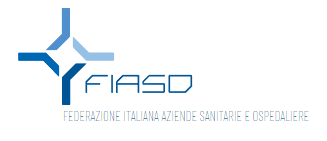In Italia risulta buono lo stato di salute della popolazione e l’aspettativa di vita risulta tra le più elevate d’Europa. From 79.9 years in 2000, the expectation has risen to 83.6 in 2019 higher than Germany, France, United Kingdom, Sweden and second in Europe only to Spain with 83.9 years. Neonatal mortality also fell from 3.5 per thousand in 2000 to 1.9 in 2019, among the lowest in Europe.
These are the data that the FIASO
Before the law 502 of 1992 there were 659 Usl, al 2020 the local health authorities were reduced to 118, have been established 52 Hospitals, 21 Ircss, 18 intermediate institutions. Compared to the reduction to 482 public hospitalization facilities, they have almost doubled local structures i.e. residential and semi-residential facilities, outpatient clinics, laboratories, mental health centres, consulting rooms, dialysis centres, going from 16,006 in 1997 to 25,292 of 2019.
There total per capita health expenditure, from 2000 to 2019, grew by 80% reaching 3,653 euros. A figure, however, much lower and far from the European ones: 6,518 euros per capita are spent in Germany. In Italy, health expenditure amounts to 13.2% of total public expenditure versus Germany's 20% or UK's 19%. And since 2010, while spending on goods and services has grown by 3.7%, a chapter on which the Pnrr focuses, that on personnel has remained the same.
In view of the significant improvements recorded, starting from 2010, personnel suffered a sharp decrease equal to 5.6%. Expenditure ceilings, blockage of turnover, measures linked to the repayment plans of some regions, have led to the current situation: over 5,000 fewer doctors, almost 11,000 nurses, plus another 23,000 fewer health workers. In totale – 40 mila unità.
Added to this is the increase in the average age of the staff, so that more than half of NHS doctors are now over 55, the highest percentage in Europe, more than 16 points higher than the OECD average.
By examining NHS performance indicators, such as sentinel performance on “Standard quantitativi, strutturali, tecnologici e qualitativi della assistenza ospedaliera” (e.g. hip fractures with operative capacity doubled in 48 hours from 31 to 66% or cesarean deliveries reduced from 28 to 22%), there is widespread adherence to predicted outcome thresholds, and steadily improving data over the decade 2010-2019. Moreover, in ten years hospitalizations for asthma and diabetes of 60% have decreased and thanks to assistance and extra-hospital care days of hospitalization decreased by 30% in twenty years.
This is the comment of President of FIASO, John Best: "L'corporatization and management have ensured excellent results, both for the levels of health achieved by the country in thirty years, and on an economic level. The last two years of pandemichave also demonstrated how the figure of the general manager, capable of developing flexible management models and responding promptly to emergencies, is crucial in setting up the health service. For ten years, however, in the face of new health needs and the aging of the population, theinvestment for personnel: 40,000 professionals are missing. During the emergency we recruited precarious workers who can now be hired thanks to the stabilization law: already 10 out of 20 regions have entered into agreements with the trade union organizations to proceed with the contracts at indefinite time. But, to bridge the ten-year gap, it is also necessary to abandon the logic of expenditure ceilings and increase the funding for the hiring of new professionals who will be able to make a difference in future healthcare with the challenges of the PNRR. Finally we have to align the percentage of resources allocated to healthcare to that of the European average; because investing in healthcare, as well as protecting health, also means guaranteeing innovation and development for the country, in order to be able to continue to look to the future with confidence".
Source: FIASO
Related articles:
– Ue: in diminuzione l’aspettativa di vita nel 2021 – FEDAIISF 12.5.22
– USA. Aspettativa di vita in calo. Fra le cause anche l’overdose da farmaci. FEDAIISF feb 2018
–ISTAT. BES Report 2021. Equitable and sustainable well-being in Italy
